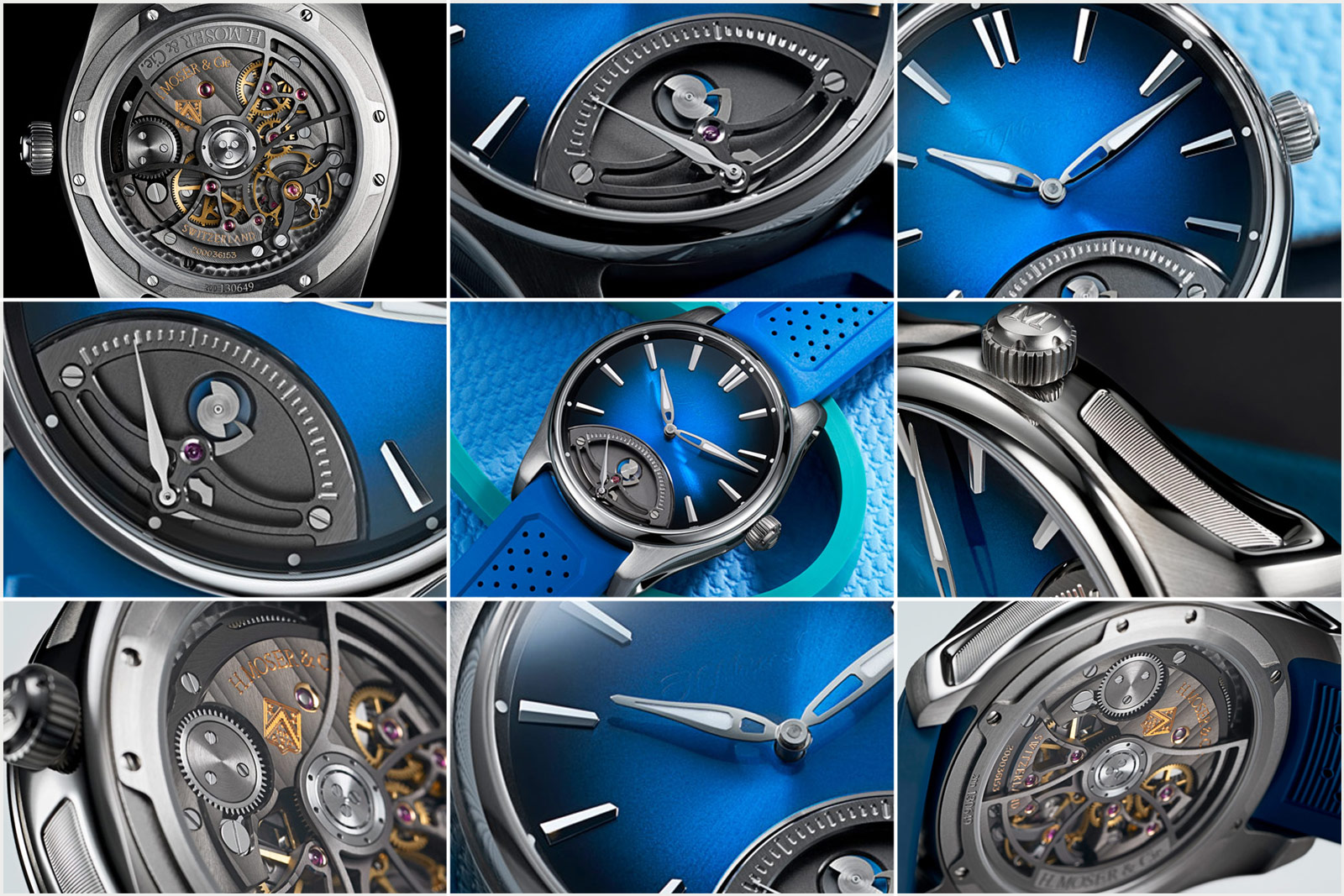H. Moser & Cie.’s First-Ever Retrograde Seconds
A Pioneer by way of Agenhor.
The newly-launched Pioneer Retrograde Seconds is the first wristwatch with the complication from H. Moser & Cie. The retrograde seconds complication was developed by Geneva movement specialist Agenhor, in which Moser acquired a stake not too long ago.
The Retrograde Seconds features the sporty Pioneer case and a midnight blue fumé dial with a large, 30-second retrograde counter at six o’clock. Every 30 seconds, the retrograde hand jumps back to the starting point with the help of the double-snail cam, which is visible below an open-worked bridge for the seconds hand.
Initial thoughts
The Pioneer line is home to many of Moser’s unusual complications, such as the Cylindrical Tourbillon Skeleton and Perpetual Calendar. The Pioneer case is sporty with a 120 m water-resistance rating and vent-like flanks, but not a conventional sports watch like the Streamliner, its more popular sibling with an integrated bracelet.
The Retrograde Seconds takes the sportiness a step further with the retrograde counter that resembles an instrument display. The grey-coated scale and bridge of the retrograde seconds fits the overall aesthetic, while also adding contrast to the all-blue dial.
Visuals aside, the Retrograde Seconds is a relatively simple yet engaging complication that keeps the watch accessible. Priced at CHF19,900, the Pioneer Retrograde Seconds is one of the most affordable watches in the Moser catalogue. It delivers much that Moser is known for – a minimalist, smoked dial and a competent in-house movement – but with a retrograde display.
Retrograde mechanics
The Retrograde Seconds is sized similar to existing Pioneer models, with chunky, sporty dimensions. The stainless steel case is 42.8 mm in diameter and 10.6 mm in thickness without the crystal; with the domed sapphire crystal, the height is significantly thicker at 14.2 mm.
Water resistant to 120 m, the case also features recessed flanks decorated with vertical ribbing patterns inspired by the intake vents of sports cars.
The midnight blue fumé dial is typical minimalist Moser with an “secret” logo just under 12 o’clock that’s printed in transparent lacquer. The flange around the edge of the dial is marked with luminous dots for the hours while the leaf-shaped hands are filled with Super-LumiNova.
The highlight is the 30-second retrograde counter that’s modelled on a speedometer. It’s partially skeletonised to reveal the finger and double-snail cam that trigger the 30-second jump of the hand.
The finger travels along the outline of the snail cam until it reaches the step on the snail, which causes the finger to drop and the seconds hand to jump back to zero. This process is driven by a small spring just visible under the seconds hand axis. The spring, in turn, is connected to a rack that positions the seconds hand.
The Retrograde Seconds is powered by the HMC 250, an in-house calibre with a three-day power reserve. It is decorated with an anthracite finish that Moser now employs on its more modern designs.
The HMC 250 a reworked variant of the HMC 200, Moser’s workhorse automatic movement, with open-worked bridges to reveal the wheels. In addition, it’s fitted with an Agenhor retrograde seconds module on the front.
Key facts and price
H. Moser & Cie. Pioneer Retrograde Seconds
Ref. 3250-1200
Case diameter: 42.8 mm
Case height: 10.6 mm without sapphire crystal; 14.2 mm with sapphire crystal
Material: Stainless steel
Crystal: Sapphire
Water resistance: 120 m
Movement: HMC 250
Functions: Hours, minutes, and retrograde seconds
Winding: Automatic
Frequency: 21,600 beats per hour (3 Hz)
Power reserve: 72 hours
Strap: Alligator leather, rubber, or textile strap; or steel bracelet
Limited edition: No
Availability: Now at H. Moser & Cie. boutiques and retailers
Price: CHF19,900
For more, visit h-moser.com.
Back to top.